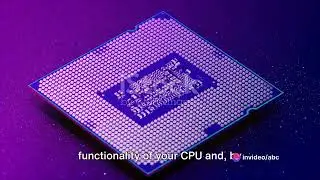Protected Mode
Protected Mode refers to a mode of operation in x86 architecture processors that provides a more advanced and protected environment than Real Mode. The x86 architecture, developed by Intel, includes different operating modes to support various tasks and requirements. Protected Mode is a key feature introduced with the 80286 processor and continued in later x86 processors.
Key characteristics and features of Protected Mode include:
Memory Protection:
One of the significant advancements in Protected Mode is the ability to provide memory protection. This means that the operating system can establish different levels of access to memory segments, preventing one program from accidentally (or maliciously) interfering with the memory of another program.
Multitasking:
Protected Mode supports multitasking, allowing multiple programs or tasks to run concurrently. The operating system can allocate time slices to different tasks, giving the appearance of simultaneous execution.
Extended Addressing:
Protected Mode extends the addressable memory beyond the 1 MB limit imposed by Real Mode. It supports a 32-bit address bus, enabling access to up to 4 GB of memory.
Enhanced Instruction Set:
Protected Mode provides an extended instruction set compared to Real Mode, including new instructions and addressing modes. This enables more powerful and efficient programming.
Virtual Memory:
Virtual memory support allows the operating system to use a combination of physical RAM and disk space to create the illusion of a larger memory space. This is crucial for running multiple applications concurrently.
Privilege Levels:
Protected Mode introduces four privilege levels (rings) to manage different levels of access to system resources. Ring 0 is the most privileged level, typically reserved for the kernel, while higher-numbered rings are less privileged.
Interrupt Handling:
Enhanced interrupt handling capabilities allow the operating system to efficiently manage hardware and software interrupts, providing more sophisticated control over system events.
Descriptor Tables:
Protected Mode uses descriptor tables, such as the Global Descriptor Table (GDT) and Local Descriptor Table (LDT), to define memory segments and their attributes.
To enter Protected Mode, a system must undergo a specific initialization process, often done by the operating system during bootstrapping. Once in Protected Mode, the operating system takes advantage of the features mentioned above to provide a more robust and secure environment for running applications.
It's important to note that modern operating systems, such as Windows, Linux, and macOS, utilize Protected Mode to provide a stable and secure platform for various applications and services. However, modern processors, including 64-bit architectures, also support additional modes such as Long Mode, which extends the capabilities introduced in Protected Mode.



















